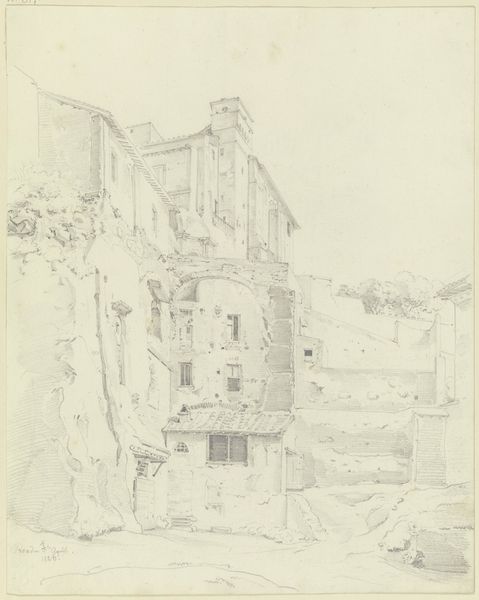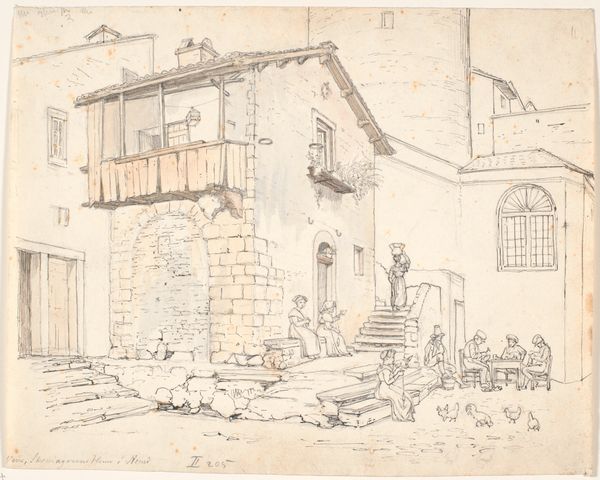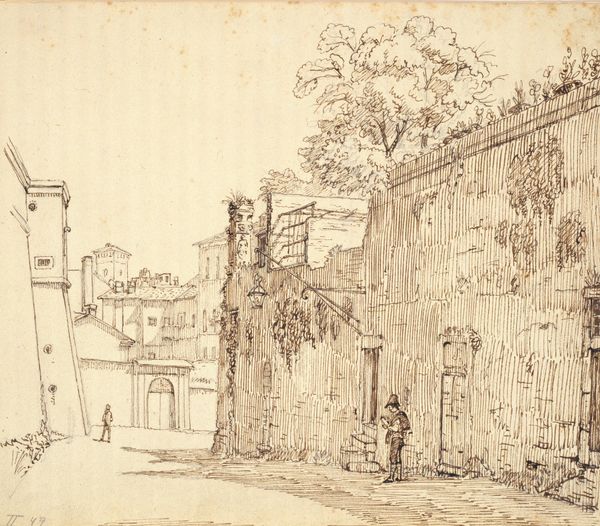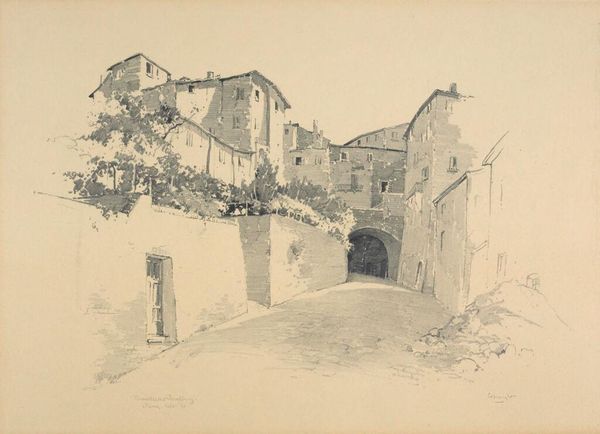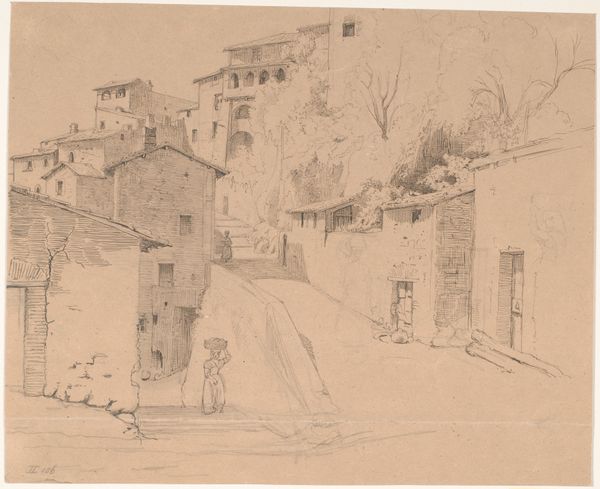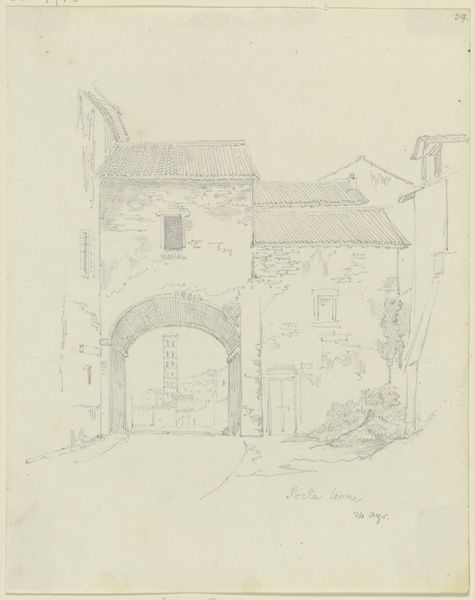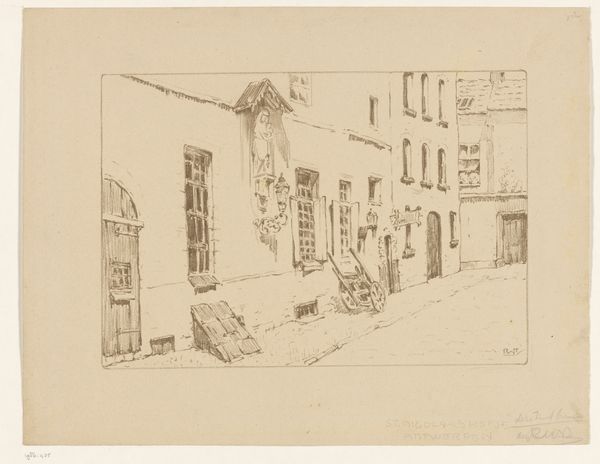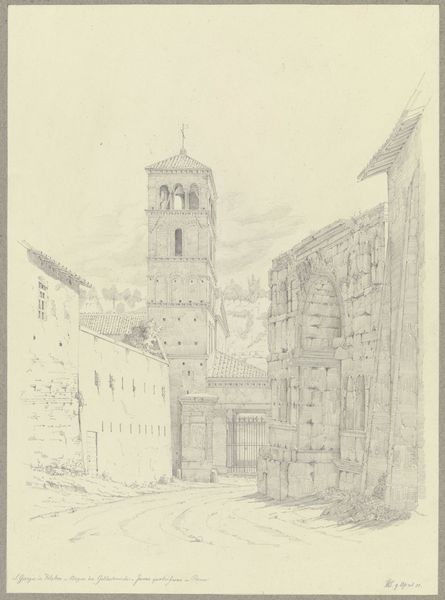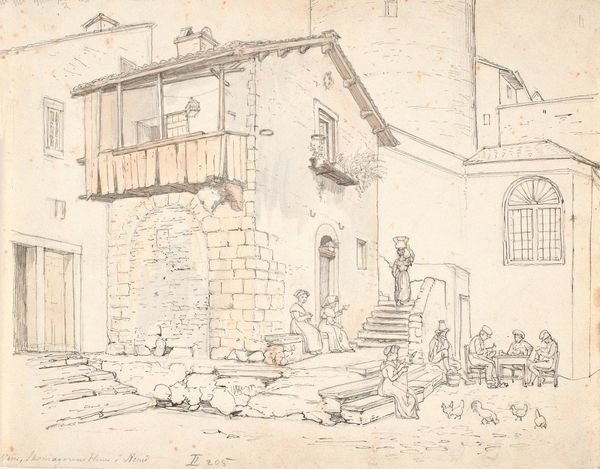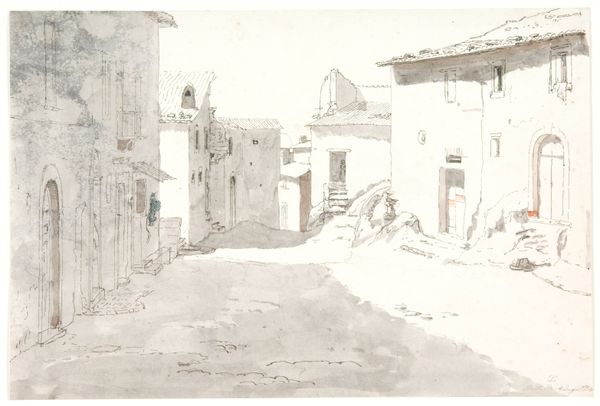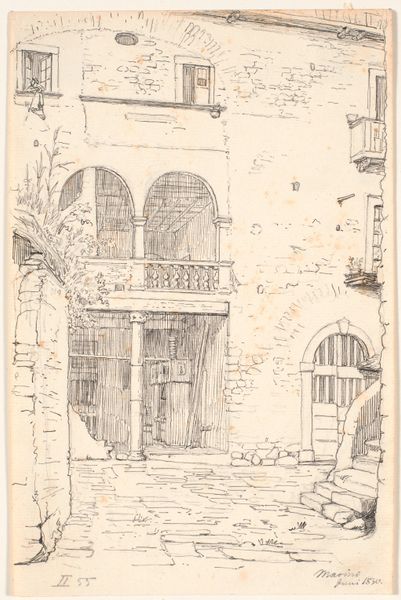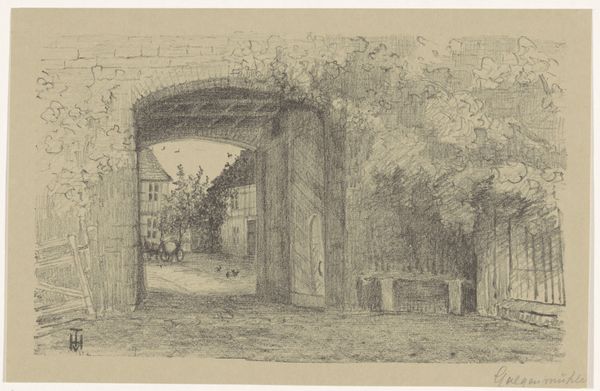
Copyright: Public Domain
Editor: So, this is Ernst Fries' "Street in Terni-Papigno" from 1826. It's a pencil drawing on paper. I find the arches really striking; they give the scene such a sense of depth. What do you see in this piece? Curator: This drawing really speaks to the romantic fascination with the past, particularly the crumbling beauty of Italian architecture. It depicts a kind of pre-industrial, almost timeless urban landscape, doesn't it? Think about what isn’t shown—the bustling industries, perhaps even the intense social hierarchies of the time are muted here. Fries seems to be searching for something outside of those contemporary realities. What stories might these walls tell? Editor: I hadn’t thought about what's deliberately left out. It does seem idealized. Curator: Exactly. The drawing’s composition directs our gaze upwards, toward the mountainous background, away from the immediate reality of the street itself. Notice how the light and shadow almost romanticize what would likely have been a place of labour and daily life. This "romanticism" carries certain connotations. To whom do these picturesque ruins appeal, and whose stories are erased in favour of this visual aesthetic? Editor: That's a good point. It makes me think about how we tend to filter history through our own perspectives and biases, only noticing things through a very select and incomplete filter. Curator: Precisely! By appreciating the aesthetics and history, but asking such questions, we recognize this artwork's value as more than a snapshot. These spaces held layers of meaning tied to identity, status, and social struggle, things the pretty pencil lines maybe veil instead. Editor: I'm glad I asked. I now see a tension between what is shown, and what might have been consciously, or unconsciously, left out! Thank you. Curator: A crucial perspective for anyone examining art intended for an audience outside its time! It's not just about what you see, but what's hidden within what you see.
Comments
No comments
Be the first to comment and join the conversation on the ultimate creative platform.
